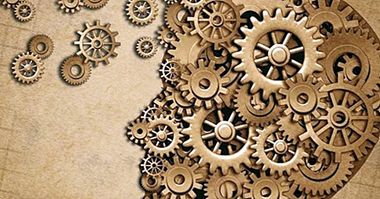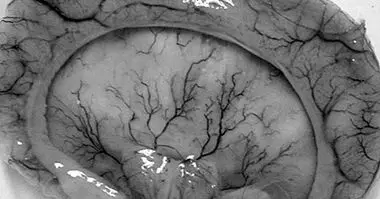Panic disorder: symptoms, causes and treatment
The term "anxiety crisis" is something that we probably all know. In fact most people have experienced one or have seen someone do it throughout their life. But in some cases these crises occur relatively frequently and generate a great fear of suffering them again, which in turn causes situations to be avoided. We are talking about those people who have a panic disorder .
- Related article: "The 16 most common mental disorders"
Panic disorder
The so-called panic disorder is one of the most common types of mental disorder, characterized by the recurrent appearance of sudden and unforeseen panic attacks (the subject may be calm or in a situation of anxiety before its appearance).
Panic attacks, also known as panic attacks, are the appearance of sudden and temporary episodes of feelings of anguish, discomfort and fear of high intensity that can have a variable duration and that usually generate a maximum activation peak after a few minutes and resolve in around fifteen minutes (although they can sometimes last for hours).
During these attacks, a great variety of symptoms appear, among which tachycardia, profuse sweating, tremors, hyperventilation and feeling of being suffocated, hyperthermia , numbness, pain in the chest, intestinal discomfort and psychological symptoms such as fear of dying or suffering from a heart attack, the idea of losing control over one's body or even going crazy and possibly of dissociative symptoms such as derealization (feeling that what is happening is not real) or depersonalization (strangeness with the subject's own existence).
After the anxiety crisis or anxiety appears for a month or more the concern that they may return or that they may experience the same sensations at some time. The subject anticipates the occurrence of such attacks and this generates great fear and anguish, a fear that causes a state of great tension in the subject and can lead to the implementation of mechanisms and behaviors that allow avoiding or said sensations or the possible appearance of new attacks. So, if for example the panic attack gave us on the subway it is likely that we avoid using public transport again.
This will generate consequences of different magnitude that will alter your day to day to a greater or lesser extent, both personally and socially and at work. The functionality and daily life of the person with this problem will be limited by the panic and the avoidance of circumstances that may generate it. In fact, it is common for the subject to end up suffering from depressive problems or even substance use and abuse.
Anxiety crises as something not pathological
Experiencing a panic attack is certainly an extremely unpleasant and aversive experience. As we have said, it is common for fear to die or to go crazy to appear. In addition, many symptoms resemble to a certain extent those of a heart attack, which reinforces the idea that something very serious is happening and panic and anxiety increase and reinforce the symptoms described above.
Despite this, it must be borne in mind that panic attacks are not indicative per se of any disorder unless they occur in a very recurrent manner and that generate avoidance in anticipation of its occurrence. In fact, a relatively high percentage of the world's population will suffer at some point during their life some crisis of anxiety or panic attack. This is especially common in demanding companies with a high level of demand , a frequent thing today.
But despite what has been said, they must be taken into account when evaluating psychopathology, given that it is not uncommon for them to appear in both panic disorder and other mental problems.
- Related article: "The 7 types of anxiety (causes and symptoms)"
Relationship with agoraphobia
Panic disorder has traditionally been closely linked to another psychological problem called agoraphobia, which gives fear and anxiety to the idea of exposure to places where escape would be difficult or may not receive help in the case of suffering a panic attack or other embarrassing situations (although the majority of the population considers is that it is the fear of open spaces, in fact the underlying fear and what would cause avoidance of these and other types of spaces would be this).
This is because it is very frequent that agoraphobic subjects anticipate anxiety and panic attacks and avoid such situations. In fact, although they are currently diagnosed separately until a few years ago, a distinction was made between panic disorder with or without agoraphobia.
- Maybe you're interested: "Agoraphobia: the fear of losing control (causes, symptoms and treatment)"
Confusion with heart problems
One of the most common fears that arise at the time of suffering a panic attack is to be about to die due to a heart attack. It is a logical confusion, considering that many of the symptoms are similar to angina pectoris or a myocardial infarction : tachycardia, chest pain, sweating ...
However, we must bear in mind that there are differences between panic attack and infarction. Among them, they emphasize that in the infarction, unless other problems appear or anxiety arises, there is no hyperventilation or sensation of loss of body control. The pain is different and is usually more widespread, in addition to while in the infarction there is a link with the realization of effort, in anxiety this does not happen . The duration of symptoms is also different. In any case it is advisable to go to a medical center.
What is the cause?
As with other disorders, the exact cause of why some people develop a panic disorder and others are not completely known.
The appearance of the first crisis may be due to situational factors , while some authors propose that recurrence, anticipation and concern for panic attacks occur in the generation of negative and aversive interpretations of bodily sensations not linked to anxiety.
The fact that some sensations are interpreted as anxious generates fear and anxiety, which ultimately ends up generating the appearance of a crisis.
Likewise, there is also speculation about the possible influence of genes, anxiety disorders being generally more frequent in families with previous cases. The learning of behavior models or previous experiences may also have some influence.
Treatment and therapy
Panic disorder is a highly disabling problem for those who suffer from it and tends to be chronic if it is not treated. Fortunately, the studies carried out on this anxiety disorder indicate that The most common and recommended treatments available tend to have a very high efficacy , concretely of more than 80% of recoveries.
One of the most frequent and most effective treatments is, as with phobias, exposure. This technique is based on putting the subject in situations in which he experiences little by little situations that avoid and generate anxiety so that he can reduce the level of fear and anxiety about them and the avoidance that they usually assume.
It is important to keep in mind that exposure must be gradual , being necessary to agree with the patient a hierarchy of feared situations to go little by little managing to reduce the generated anxiety. In the case of panic disorder, we are talking about situations that avoid for fear of suffering a panic attack as well as interoceptive work, including exposure to feelings linked to panic (for example, hyperventilation).
Another of the most effective treatments, which can occur along with the previous one, is cognitive restructuring. In this case we intend to combat the dysfunctional thoughts and beliefs that have generated and / or maintain the problem. It seeks to descatastrofizar the situation and achieve change the negative interpretations of bodily sensations so that they are not attributed to the occurrence of an anxiety crisis. Behavioral experiments are also used in which the patient is asked to perform tests to check if their thoughts and hypotheses about what happens (being in a certain way a small exposure) are adjusted or not to reality.
Teaching relaxation techniques can serve to reduce the level of anxiety and anxiety or learn to control it, being very useful for the patient.
Use of drugs
Sometimes psychopharmaceuticals are also used, being usual to prescribe benzodiazepines and tranquilizers or even some antidepressants such as SSRIs. The use of these drugs can be useful to reduce the level of anxiety , but it is necessary to combine it with psychotherapy so that the subject learns to modify their beliefs and stops avoiding situations and sensations, so that relapses do not occur after the withdrawal of the drug.
Bibliographic references:
- American Psychiatric Association. (2013). Diagnostic and Statistical Manual of Mental Disorders. Fifth edition. DSM-V. Masson, Barcelona.
- National Institute of Mental Health (s.f.). Panic disorder: when fear runs out. [online publication]. Available at: //www.nimh.nih.gov/health/publications/espanol/trastorno-de-panico-cuando-el-miedo-agobia/index.shtml#pub8



















